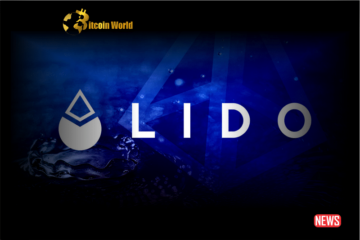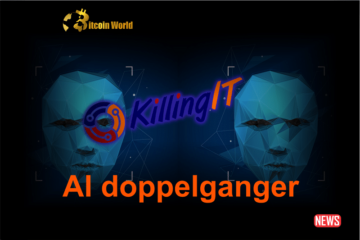
The EOS Network Foundation (ENF) has made public its intention to promote interoperability between Ethereum and EOS by announcing the beta launch of the EOS EVM mainnet. This move was made in response to a request made by the EOS community.
Solidity is the programming language utilised by most web3 developers, and the EOS EVM is an emulation of the Ethereum Virtual Machine (EVM). This enables the deployment of decentralized apps (DApps) written in Solidity.
According to the ENF team, the difficulties caused by Ethereum’s scalability make it difficult to build DApps on a large scale. The introduction of EOS EVM is intended to close this void. The group intends to accomplish this goal by combining the capabilities of the Ethereum community’s resources and those that the EOS Network can give in terms of performance.
According to Yves La Rose, the creator and chief executive officer of the EOS Network Foundation, this is a very significant achievement for the network and opens the way for an interoperable future. “EOS EVM is a significant milestone and represents our commitment to a multi-chain future,” emphasized La Rose.
In addition, according to La Rose, this enables developers to take advantage of the reduced transaction costs and increased speed that the EOS network provides.
Following the most recent upgrade to Shapella, the Ethereum network is anticipating an increase in usage. As a result, projects have prioritised deploying EVM compatibility inside their networks. The EVM and the WebAssembly Virtual Machine were among the virtual machines supported by the smart contracts that Astar Network released on April 3rd.
According to Sota Watanabe, the creator of Astar Network, this would allow their network to support the development of new multichain applications.
Meanwhile, on March 27, a beta version of Polygon’s zkEVM, a solution for zero-knowledge rollup scaling, was made available to the public. This technology is designed to simulate the environment in which transactions are executed on the Ethereum mainnet. Polygon asserts that this will allow decentralized applications to scale while maintaining or improving performance.
Shibarium’s Puppy Net Experiences Explosive Growth, Surpassing 550,000
- SEO Powered Content & PR Distribution. Get Amplified Today.
- Platoblockchain. Web3 Metaverse Intelligence. Knowledge Amplified. Access Here.
- Source: https://bitcoinworld.co.in/eos-evm-to-allow-interoperability-across-ethereum-eos/
- 100
- a
- accomplish
- according
- across
- ADDITION
- address
- ADvantage
- among
- Announcing
- applications
- apps
- April
- ARE
- as
- Astar
- available
- beta
- between
- BitcoinWorld
- breakout
- build
- Bullish
- by
- CAN
- capabilities
- caused
- chief
- Chief Executive
- chief executive officer
- CO
- commitment
- community
- contracts
- Costs
- creator
- DApps
- decentralized
- Decentralized Applications
- deploying
- deployment
- designed
- developers
- Development
- difficult
- difficulties
- Emulation
- Environment
- EOS
- ethereum
- Ethereum mainnet
- ethereum network
- EVM
- executive
- Executive Officer
- Experiences
- For
- Foundation
- future
- goal
- Group
- Growth
- Have
- HTTPS
- improving
- in
- Increase
- increased
- INSIDE
- intention
- Interoperability
- interoperable
- introduction
- IP
- IP Address
- Is
- IT
- ITS
- LA
- language
- large
- launch
- machine
- Machines
- mainnet
- major
- make
- March
- milestone
- move
- multichain
- net
- network
- networks
- New
- of
- Officer
- on
- opens
- performance
- plato
- plato data intelligence
- platodata
- platogaming
- poised
- Polygon
- Programming
- projects
- promote
- provides
- public
- Reduced
- released
- represents
- Resources
- response
- result
- ROSE
- Scalability
- Scale
- scaling
- shanghai
- significant
- smart
- Smart Contracts
- solution
- speed
- Staking
- support
- Supported
- Take
- Team
- Technology
- that
- The
- their
- to
- transaction
- Transactions
- upgrade
- version
- Virtual
- virtual machine
- way
- Web3
- while
- will
- would
- zephyrnet











